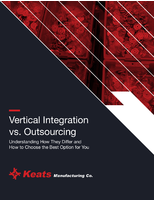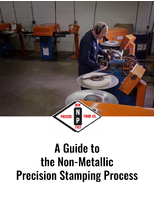APEO-Free Pigment Grind Surfactant aids pigment dispersion.
Share:
Press Release Summary:
Suited for low-VOC paint and coating formulations, ECOSURF(TM) LF Surfactants are initially soluble and offer optimal wetting with low foam during pigment addition. As temperatures rise above cloud points, these biodegradable products become insoluble, stop creation of additional foam, and help reduce existing foam. When paint batch finishes and temperatures decrease, surfactants return to soluble state and contribute to coating properties such as color acceptance and freeze-thaw resistance.
Original Press Release:
Dow Introduces ECOSURF(TM) LF APEO-Free Pigment Grind Surfactant
- Combines Low Foam and High Performance
- Additional Foam Control through Cloud Point Defoaming
- Readily Biodegradable1
PHILADELPHIA - Dow Coating Materials (DCM), a global business unit of The Dow Chemical Company, announces a new addition to its product line of APEO-free surfactants. ECOSURF(TM) LF Surfactants are low-foam, high-performance additives for pigment dispersion that offer excellent pigment wetting and color acceptance, plus additional foam control through cloud point defoaming.
"ECOSURF LF Surfactants address the growing need for high performance with low foam, particularly in low VOC paint and coating formulations and in formulations where APEO-free surfactants are preferred," says Kendall Justiniano, Strategic Marketing Manager, DCM. "From a performance perspective, ECOSURF LF Surfactants compare favorably with our best APEO options, including TRITON(TM) CF-10 Surfactant, for pigment wetting and color acceptance."
From a process perspective, ECOSURF LF Surfactants deliver essential low foam properties, adds Justiniano. When matched with the right dispersant, they can also offer additional foam control through cloud point defoaming.
How it works
Cloud point refers to the temperature at which ethoxylate surfactants become insoluble in an aqueous solution. ECOSURF(TM) LF Surfactants are initially soluble and offer excellent wetting with low foam during pigment addition. As temperatures during pigment dispersion rise above cloud points, ECOSURF LF Surfactants become insoluble.
"In this form, ECOSURF LF Surfactants stop the creation of additional foam and even help to reduce existing foam," explains Greg Monaghan, Architectural Coatings Group Leader, DCM. "As the paint batch is finished and temperatures decrease, ECOSURF LF Surfactants return to a soluble state and contribute to other properties of the coating, such as color acceptance and freeze- thaw resistance."
Cloud points are characteristic of ethoxylated nonionic surfactants, but have not been widely used in paint formulating until now, says Monaghan. "Foam becomes more of an issue as formulators lower VOC levels," he explains. "With ECOSURF(TM) LF Surfactants, paint formulators can take advantage of a second mechanism for foam control in the pigment dispersion and we expect this will be particularly useful where paint manufacturers are pursuing low VOC products."
ECOSURF LF Surfactants are also readily biodegradable1. For more information about ECOSURF LF Surfactants and other APEO-free options from Dow Coating Materials, please visit www.dowcoatingmaterials.com/surfactants. For applications outside of paints and coatings, please visit www.dow.com/surfactants.
About Dow Coating Materials
Dow Coating Materials is the premier supplier of products and technologies to architectural and industrial coatings manufacturers worldwide. Combining the extensive resources of Dow and recently-acquired Rohm and Haas Company, the new business provides formulators a wide range of chemistries and support across many different product lines, including core binder technologies, additives and solvents. Additionally, Dow Coating Materials operates 13 dedicated R&D labs across all major geographies where Dow does business. For more information, visit us at www.dowcoatingmaterials.com
About Dow
Dow (NYSE: Dow) combines the power of science and technology with the "Human Element" to passionately innovate what is essential to human progress. The Company connects chemistry and innovation with the principles of sustainability to help address many of the world's most challenging problems such as the need for clean water, renewable energy generation and conservation, and increasing agricultural productivity. Dow's diversified industry-leading portfolio of specialty chemical, advanced materials, agrosciences and plastics businesses delivers a broad range of technology-based products and solutions to customers in approximately 160 countries and in high growth sectors such as electronics, water, energy, coatings and agriculture. In 2010, Dow had annual sales of $53.7 billion and employed approximately 50,000 people worldwide. The Company's more than 5,000 products are manufactured at 188 sites in 35 countries across the globe. References to "Dow" or the "Company" mean The Dow Chemical Company and its consolidated subsidiaries unless otherwise expressly noted. More information about Dow can be found at www.dow.com.
1 > 60 percent biodegradation within 28 days per OECD 301F
ECOSURF(TM) LF Surfactants are marketed under the TERGITOL(TM) brand in Canada and Japan.
All components of ECOSURF(TM) LF Surfactants are on the TSCA Inventory or are exempt from TSCA Inventory requirements under 40 CFR 720.30. This product contains a substance that will be subject to a TSCA Section 5(a)(2) Significant New Use Rule (SNUR) and export notification under TSCA 12(b). Architectural coating formulation processes that operate under zero-discharge of wastewater should not trigger the SNUR conditions but each user should assess their operations to assure compliance. The SNUR will limit release to water to no greater than 14 ppb as calculated after waste water treatment. The total removal during wastewater treatment is estimated to be > 90% based on Episuite models and demonstrated ready biodegradability. In addition, EPA does not expect significant adverse environmental effects during the uses stated in the PMN submission. These uses included formulation at less than 1% in industrial, commercial and consumer architectural coatings. TSCA 12(b) export notification is not needed when this substance is present in mixtures at less than 1%.




